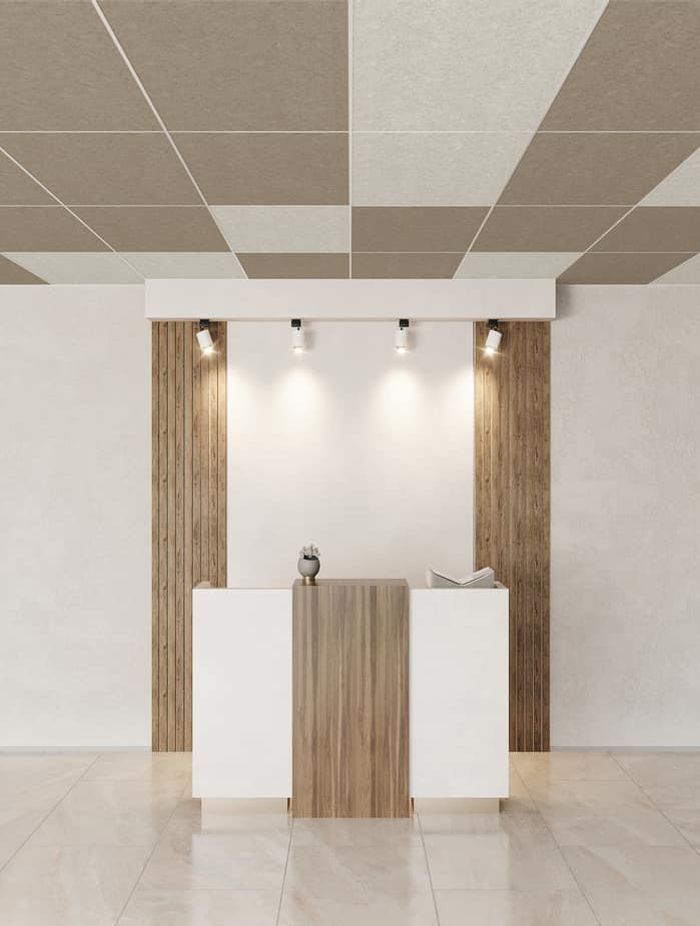Understanding the price tag: How much does it cost to tile a ceiling in Australia in 2024?

How much does it cost to tile a ceiling?
The price to tile a ceiling depends on the tiles you use and the cost of labour. So for example, if your getting a 10m² ceiling, and the cost of the tile is $50 per square metre, the price to tile the ceiling is $500 (excluding installation costs).
How to estimate the cost of tiling a ceiling
Estimating the price to tile a ceiling can be done by calculating the square metre size of the ceiling, multiplying this size by the price of your chosen tiles and adding on labour costs.
So for example, if the ceiling is 10m2 and the price of your chosen tile is $30 per square metre, and a professional tiler lets you know that it will take 5 hours to complete the job and charges $75 per square metre you can work out the total price to be $675.
The formula to keep in mind is: Total Price = (Area × Price per square meter) + (Labour cost per hour × Hours).
What impacts the price of tiling a ceiling?
There's a lot of factors that impact the price of tiling a ceiling:
Size of the ceiling
The first important factor is, of course, the size of the ceiling you're tiling. The size of a ceiling is usually measured in square meters. So, the first step in estimating the price is to measure the ceiling in question. Providing ceiling size estimates can be tricky, as it's entirely dependent on the room. But in general, you can expect small rooms, such as bathrooms, laundry rooms, and small bedrooms, to have ceilings between 5m² and 10m². For medium rooms, this can range from 12m² to 20m², and for large rooms, from 25m² to 40m².
Types of tiles used
There are quite a few different types of tiles you can use for ceiling tiles; the decision is often determined by where the ceiling is located. For example, in a bathroom, materials like porcelain or ceramic are popular, particularly for specific areas such as the ceiling over a shower area. In kitchens, things can get a little more stylish with mosaic tiles often preferred. Another popular option, particularly for commercial buildings or any environment where noise is a consideration, is acoustic ceiling tiles and panels.
Labour costs
A professional tiler typically charges per square metre, with prices ranging from around $40 - $150 per square metre depending on the tiler.
Preparation and additional materials
Before any tiling work can be done preparatory work is often needed. This includes surface preparation to ensure the ceiling is clean, smooth, and defect-free, which may involve patching, sanding, or priming. Accurate measurements and layout planning are crucial for minimising waste. While the right adhesive and grout must be selected for compatibility with the tile material and ceiling surface, and tools for cutting tiles to size can also be needed.
Related Article: 18 striking types of tiles to consider for your home in 2024
Design considerations
Patterns and textures
There may be a specific pattern or texture you want to create with your tile choice, think about the size, shape and colour to achieve your desired result.
Colour and finish
The colour and finish of your ceiling tiles play a crucial role in defining the room's atmosphere. Light colours can make a small space feel larger and more open, while dark colours add depth and warmth. A glossy finish reflects light, brightening the room, whereas a matte finish contributes to a more subdued, elegant design.
Think about the existing design
The ceiling is often referred to as the fifth wall in a room, and this perspective can guide your design choices. For example, you may want your ceiling to be completely different from the existing design scheme in a room, or you may prefer it to integrate seamlessly with the current design.
Related Article: How to choose an interior design style
Maintenance and long-term care tips
Caring for tiles in general isn't too tricky, here are a few tips:
Dust regularly - use a soft duster or vacuum with a soft brush attachment to gently remove any dust that's accumulated.
Avoid suing harsh chemicals - its important not to use chemicals or agents that can damage the surface of the tile or erode the grout.
Periodically check for damage - you should check the tiles and grouts for any signs of damage, such as cracks or chips. Keep an eye out to see if any tiles need replacing.
Consider professional cleaning - if you have a tiled ceiling that's not in good condition, or ceilings that are particularly difficult to clean then you may need to think about hiring professional who have the necessary equipment and expertise to clean the ceiling without causing damage.
Other popular ceiling treatment options
There's lots of other ceiling treatments available:
Plaster ceilings
A very common ceiling choice in homes, they are known for their smooth appearance and can be customised with different textures and finishes.
Stretch ceilings
Comprised of a flexible PVC membrane, stretch ceilings can create a smooth surface or unique shapes and designs. They're known for their ability to hide imperfections and can incorporate lighting or artistic prints.
Wooden ceiling planks
Wooden planks, and other timber ceiling applications bring natural warmth and texture. They are suitable for creating rustic, traditional, or modern looks depending on the wood type and finish.
Laminated panels
Durable and low maintenance, laminated panels can replicate various materials and are an excellent choice for achieving a specific look with less upkeep.
An interesting ceiling choice
To conclude, tiling a ceiling involves a mixture of material and labor costs. It involves more than just purchasing tiles; it's about selecting the right type, considering the size of your ceiling, and choosing who installs them. By keeping all these factors in mind, you should be able to stay within budget and create a stylish tiled ceiling




